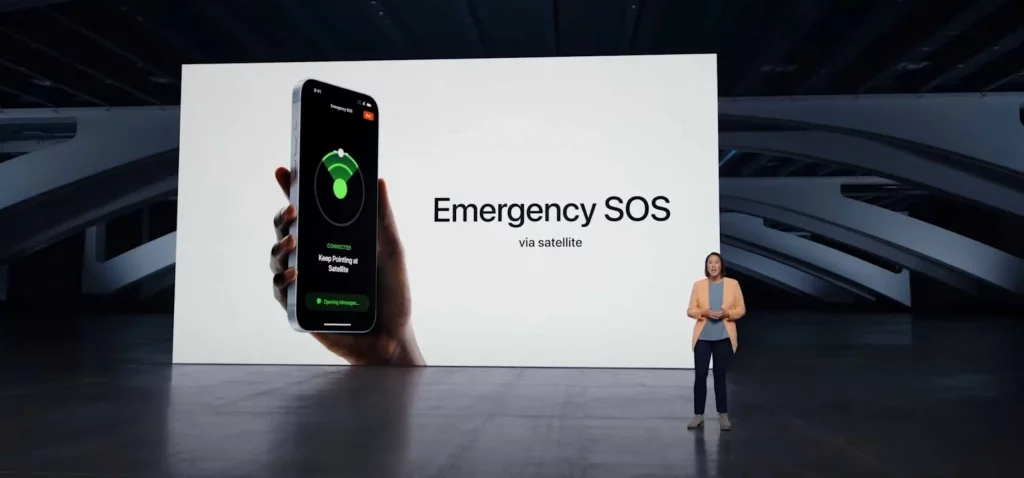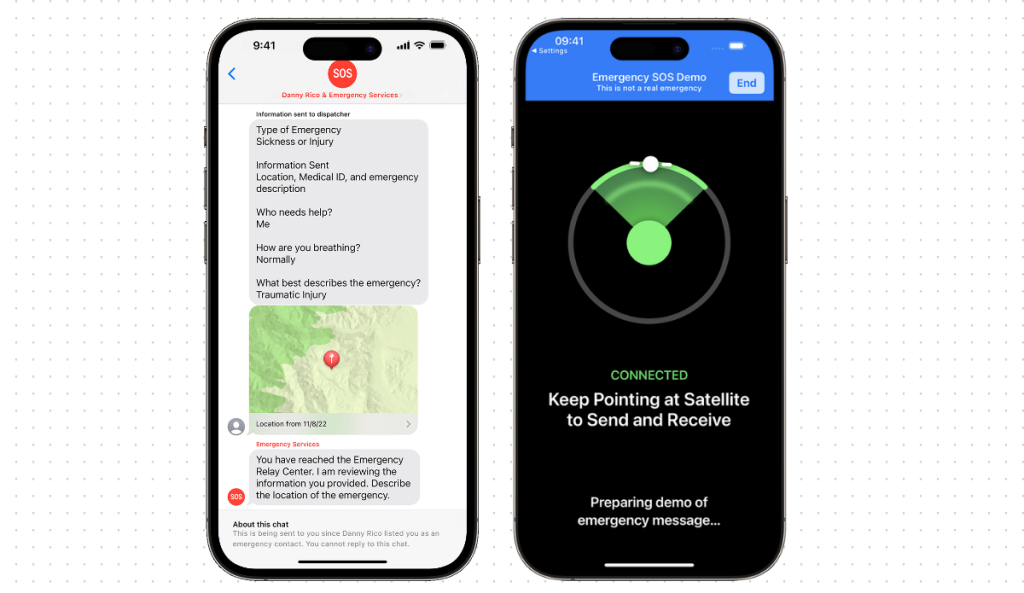Last year, on September 6, it was Huawei, not Apple, that first introduced satellite connectivity on a mainstream smartphone. A day later, on September 7, the Cupertino company also introduced this new technology with the iPhone 14 series. Satellite connectivity allows a phone to connect to a low-orbit satellite and send an SOS message even when there is no cellular signal reception.
The life-saving satellite communication feature is coming to more phones soon. Google has made it compatible with Android 14, and there are rumors that Oppo, Vivo, and Xiaomi will bring it to their devices through Qualcomm. It’s clear that satellite communication on phones could be the next big thing, so it’s important you know what it is and how it works.
What is Satellite connectivity on modern phones?
If you’re anything like us, you must have seen those old satellite phones with long antennas sticking out of their heads. Unlike your regular cell phone, a satphone connects to other phones or the telephone network via a radio link through satellites orbiting the Earth instead of terrestrial cell sites. This enables them to be useful even in the remotest locations.

Carrying a satellite phone in our pockets is not an option for most of us, so manufacturers are pushing the tech on modern smartphones, and yes, with no visible antennas. However, the current technology only allows you to send text messages via satellite and not make any calls. Also, there are certain hardware requirements for integrating this feature into smartphones. As Mishaal Rahmaan points out, the feature will depend on the modem hardware in the device you are using.
If you’re wondering how this feature can help you, here’s an example: Imagine you’re feeling adventurous and plan a trip to a remote location in the world. You get there and find yourself beyond the reach of cellular towers. God forbid, you get into an emergency and can’t reach out to someone. Satellite communication on your phone can solve this problem by providing a connection even when there is no terrestrial network available. We have already heard of numerous cases where satellite SOS technology has saved lives, the most recent being a family who used this feature to escape the Hawaii wildfires.
How does Satellite connectivity work on smartphones?
To support satellite connectivity, smartphone manufacturers need to tightly integrate hardware and software. The Apple iPhone 14 and 14 Pro models have hardware components that are deeply integrated with software, allowing antennas to directly connect to a satellite.
Apple has partnered with Globalstar, a satellite communications company that operates a constellation of 48 low-orbit satellites. To send emergency messages via satellite, Apple developed a unique compression algorithm that shrinks text messages to a third of their original size. The emergency message is received by one of Globalstar’s satellites in low-earth orbit, which travels at speeds of approximately 16,000 mph. The satellite then passes the message down to ground stations located at key points all over the world.

Huawei Mate 50 and Mate 50 Pro smartphones can send short texts and use navigation thanks to China’s global BeiDou satellite network. However, Huawei’s description of the system suggests that the Mate 50 phones can only send texts via satellite, not receive them.
It’s possible the future phones will implement the technology in a different way. They may even bring voice and data connectivity.
What lies in the future?
Many Android brands could introduce this feature with their upcoming flagship phones. Qualcomm announced at the Mobile World Congress (MWC) that phone makers, including Xiaomi, Oppo, Vivo, Motorola, Nothing, and Honor, are ready to bring satellite communication capabilities to their phones. However, there are no specific details available as of now.
Qualcomm unveiled its Snapdragon Satellite technology in partnership with satellite service provider Iridium at the Consumer Electronics Show (CES) in January. It will allow Android smartphones to send two-way text messages and access other messaging apps using satellites in emergency situations, similar to what we have seen on iPhones.
In addition, a recent report suggests Google wants to bring satellite connectivity to Messages (Via Mishaal Rahmaan). The search giant appears to be adding the user interface (UI) elements required to initiate emergency SOS messages via satellite within its Messages app. It shouldn’t be a surprise since Google has already announced that Android 14 will support satellite connectivity.
T-Mobile also announced its own partnership with SpaceX to provide satellite connectivity on smartphones through Starlink satellites. MediaTek also joined the fray in February 2023 and showed off two chipsets that enable two-way satellite communication on smartphones. And let’s not forget the rumors about satellite connectivity on future Samsung flagships that have been circulating since last year.
Satellite connectivity on phones is the next big thing
There’s no doubt satellite Communication on smartphones has the potential to have a significant impact on our lives. The promise of continuous, far-reaching connectivity can be a game-changer, especially in life-threatening situations. Clearly, this makes satellite communication on smartphones not just a luxury, but a possible lifesaver.
RELATED:
- Samsung’s new Flex Hinge for Foldables explained: How Does It Work?
- What is Stacked Battery Technology that’s expected on Galaxy S24 series & iPhone 15
- Environmentally Friendly Smartphones: A Closer Look at Sustainable Devices like Fairphone 4
- Best Smartwatches with Long Battery Life in 2023 – Garmin, Polar, Amazfit & More
- Best Activity Tracker Watches in 2023 – Garmin, Fitbit, Apple & More







